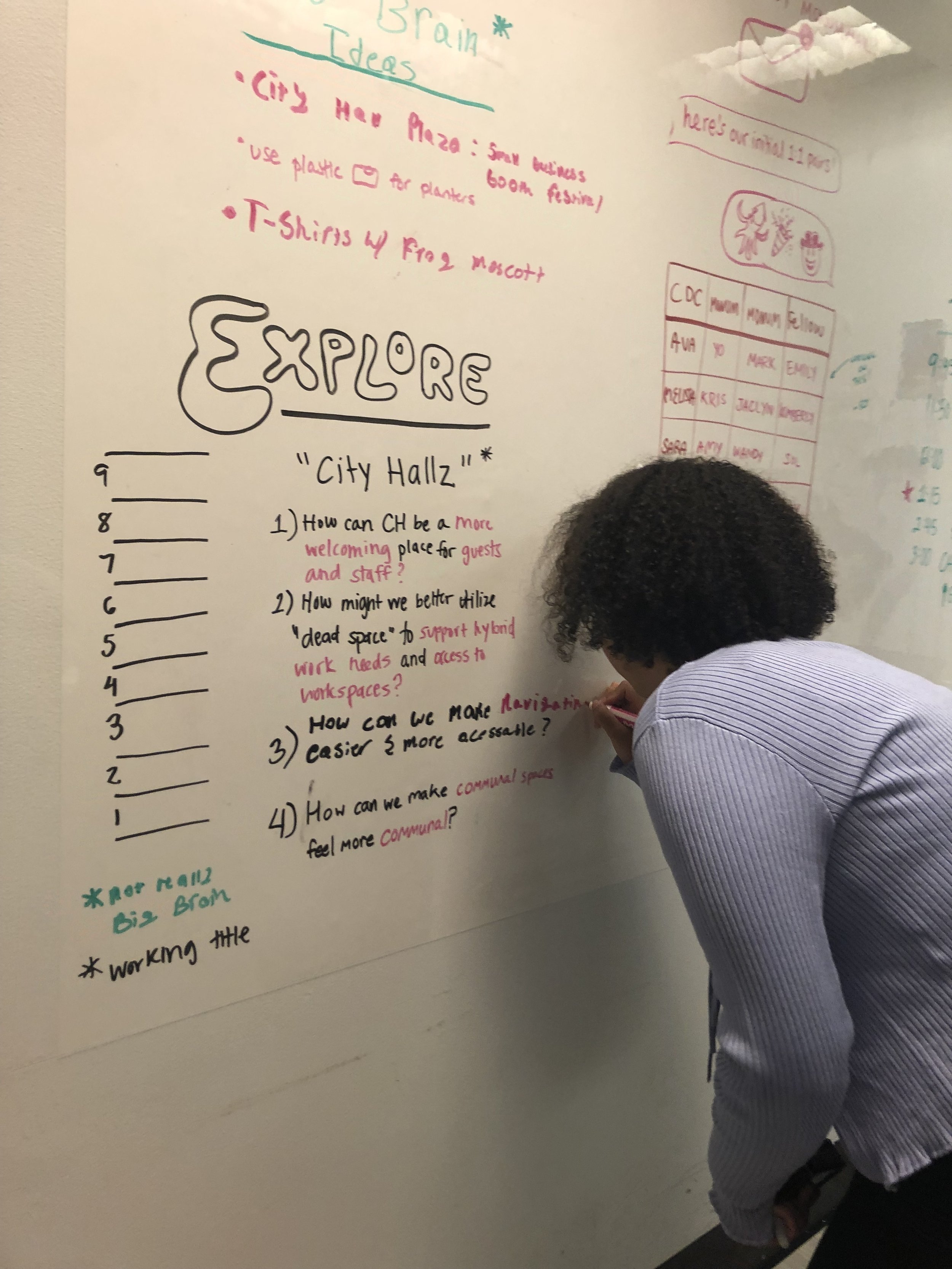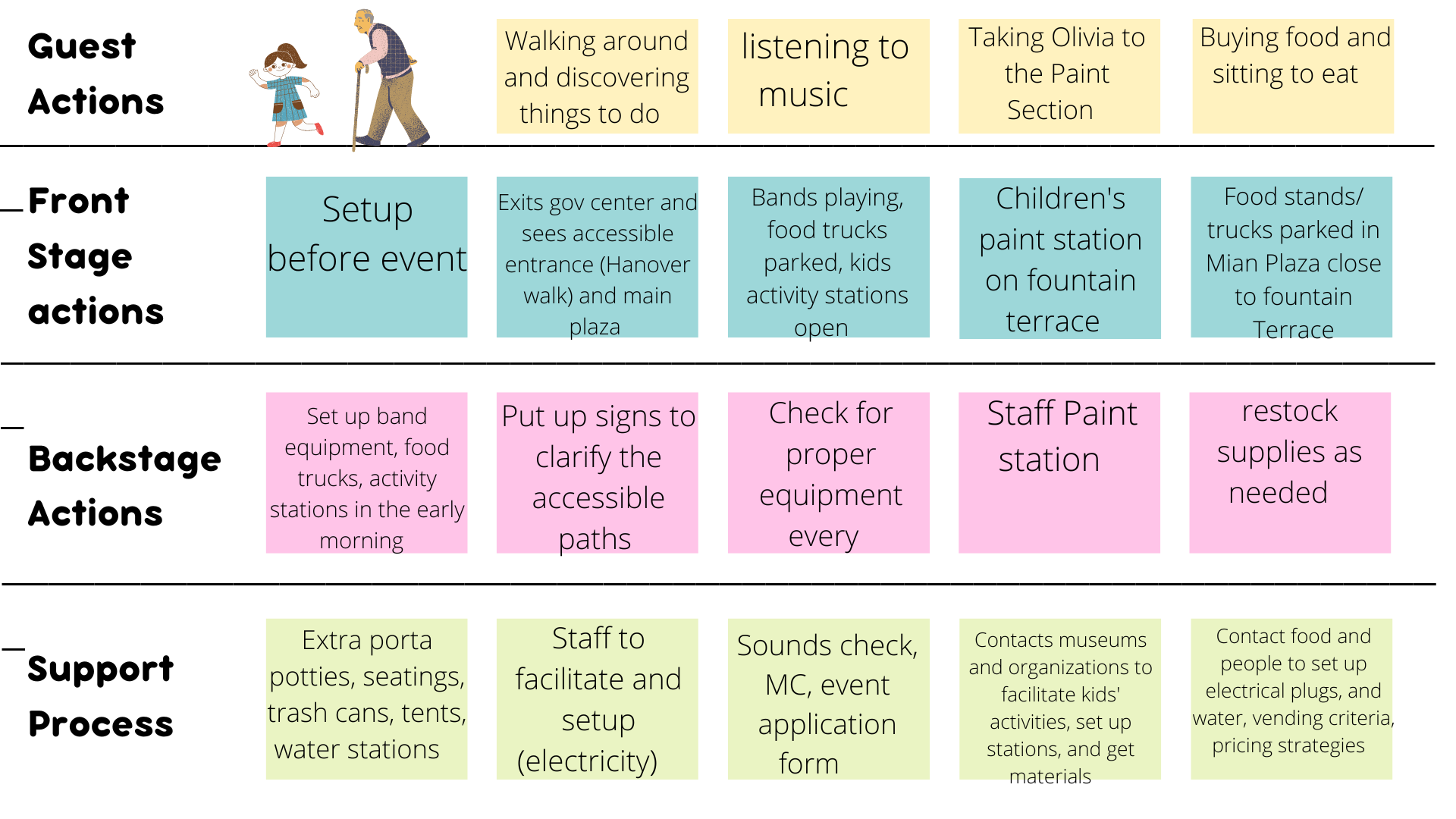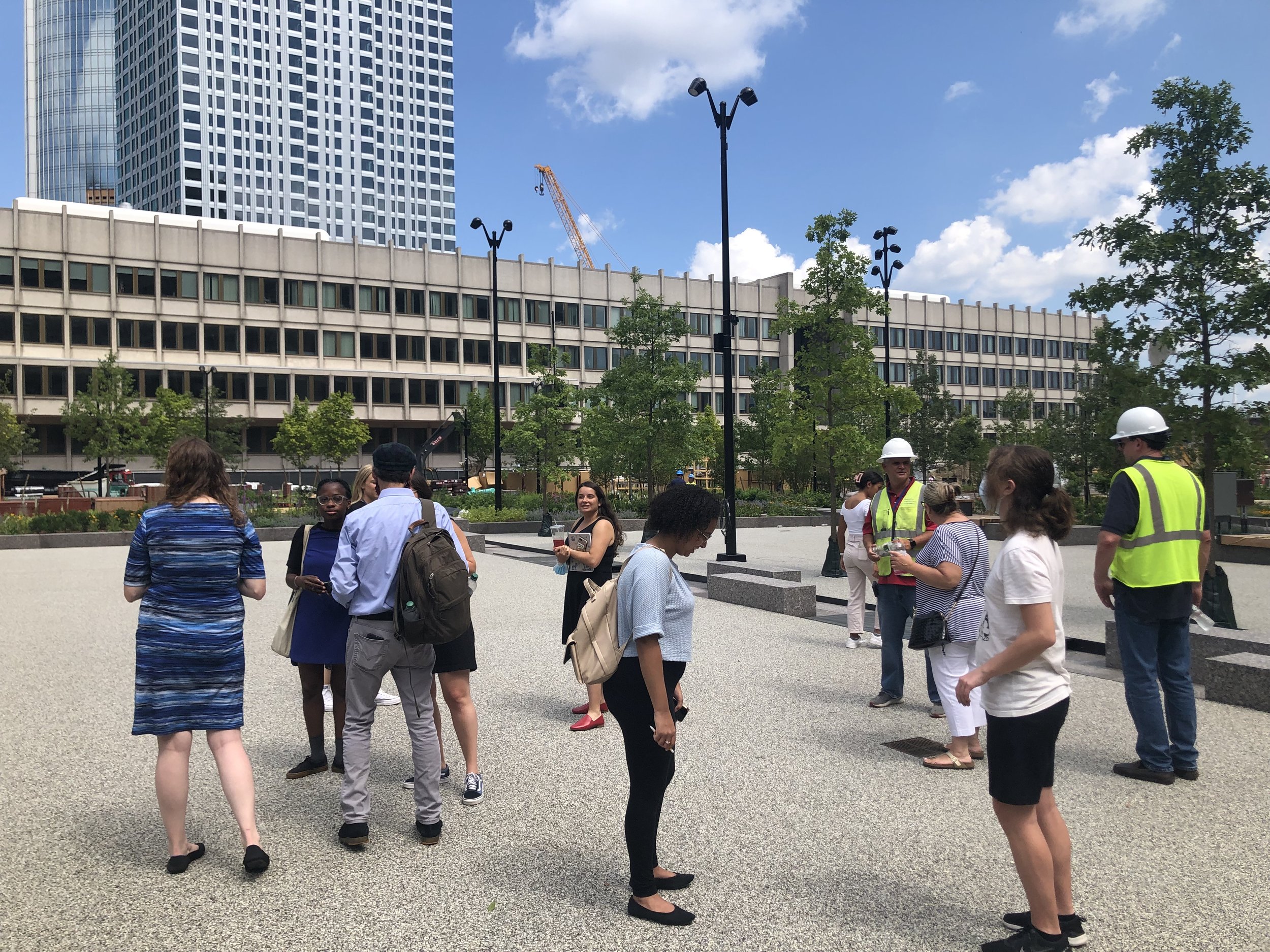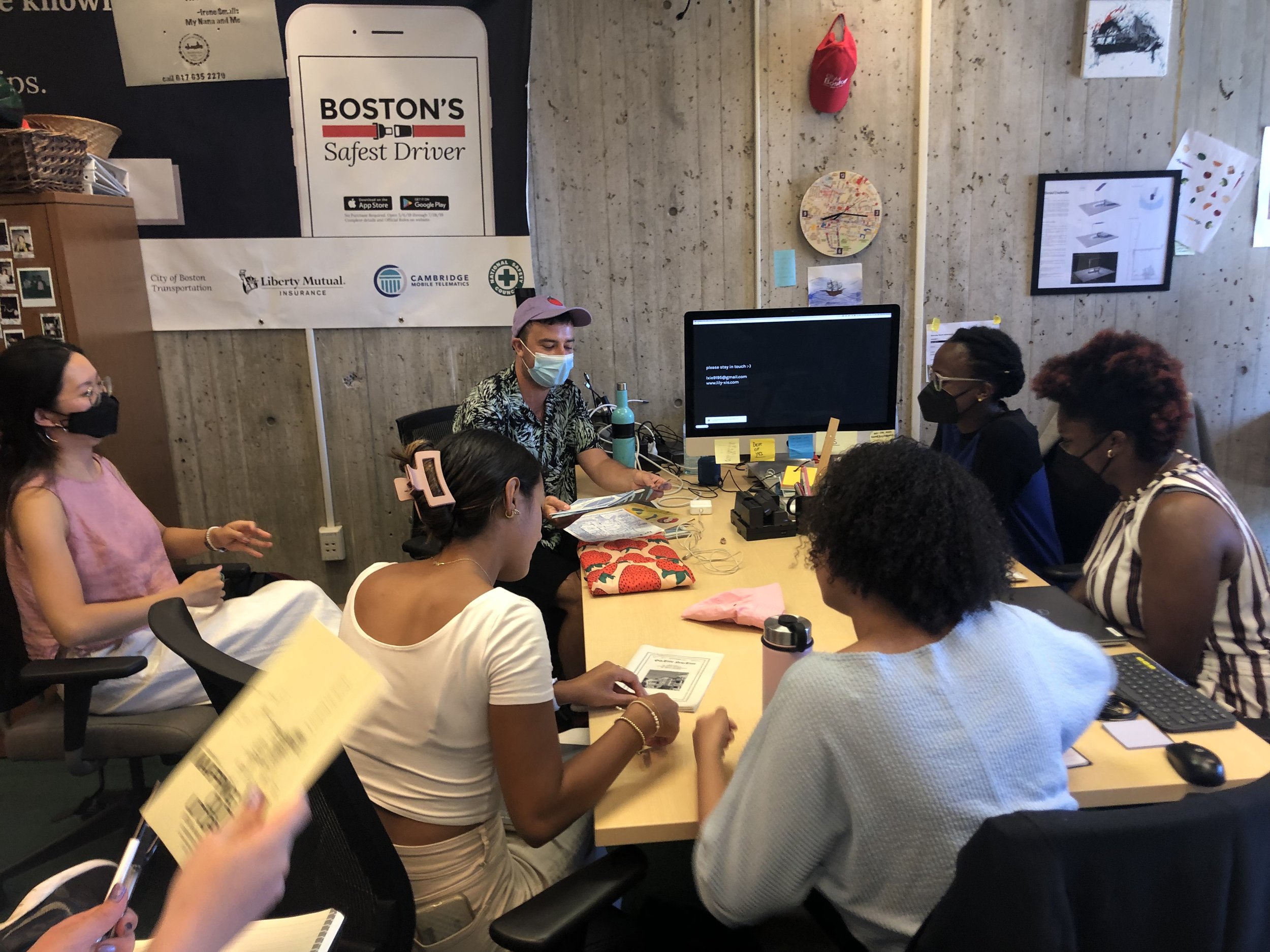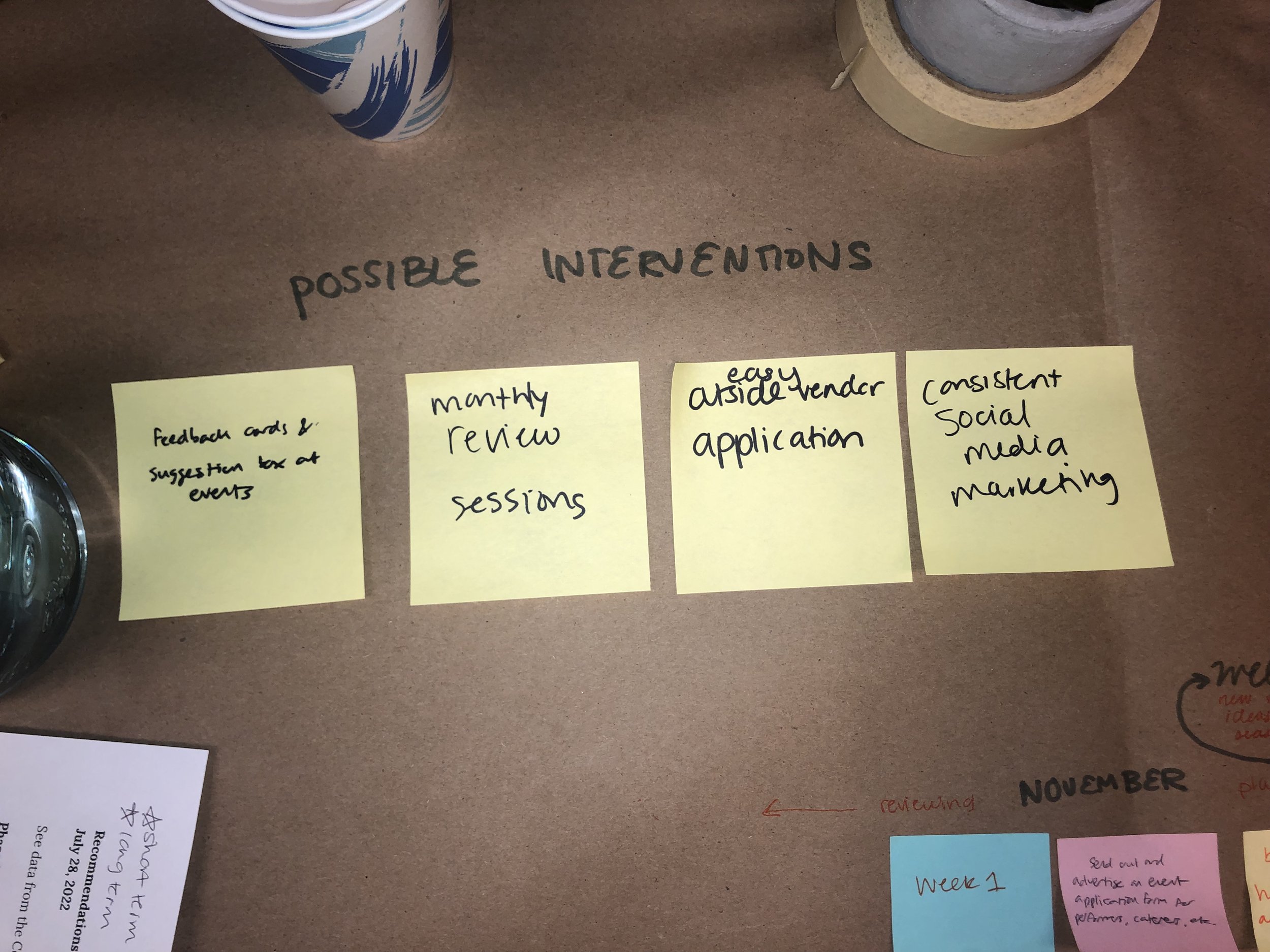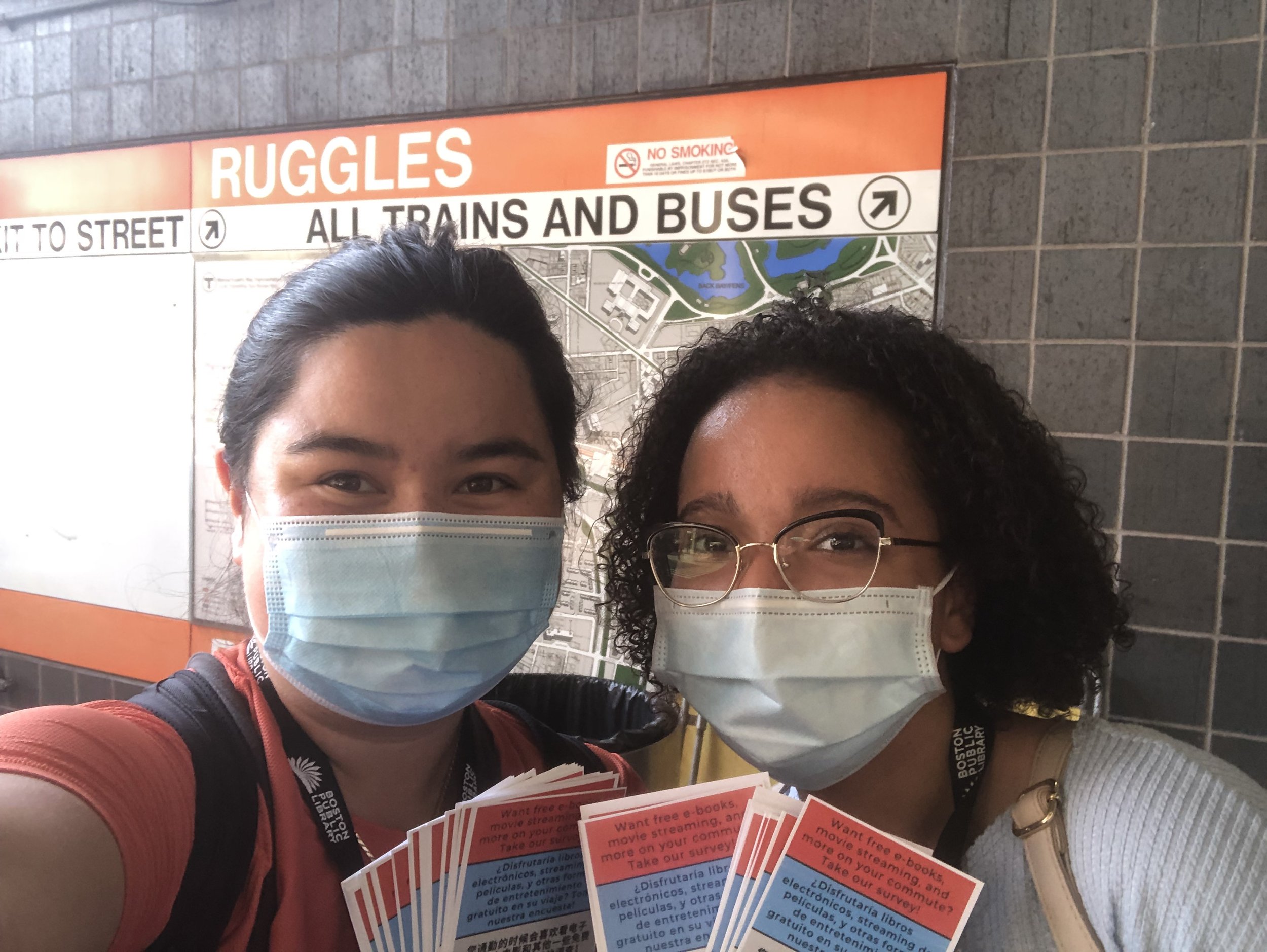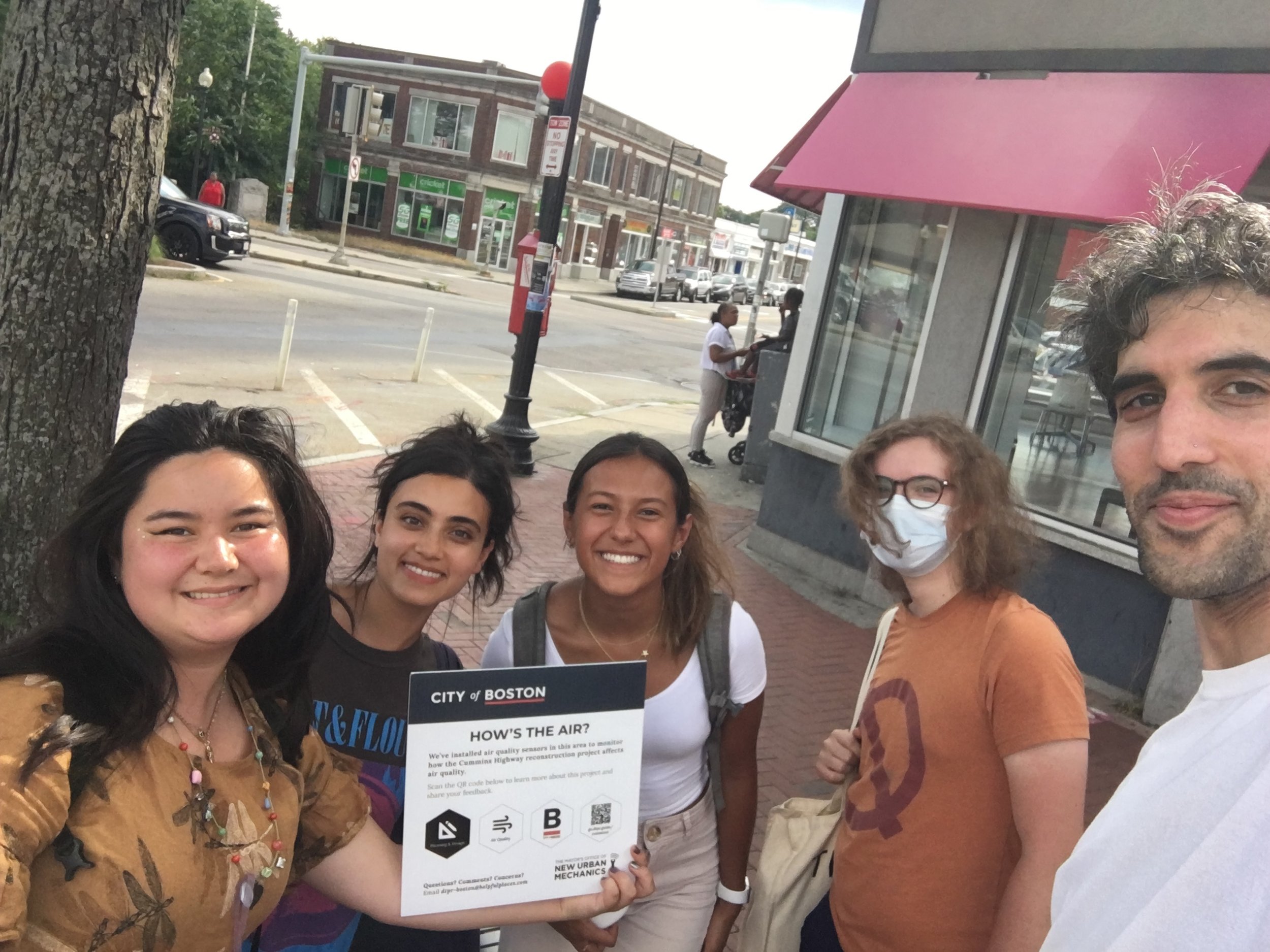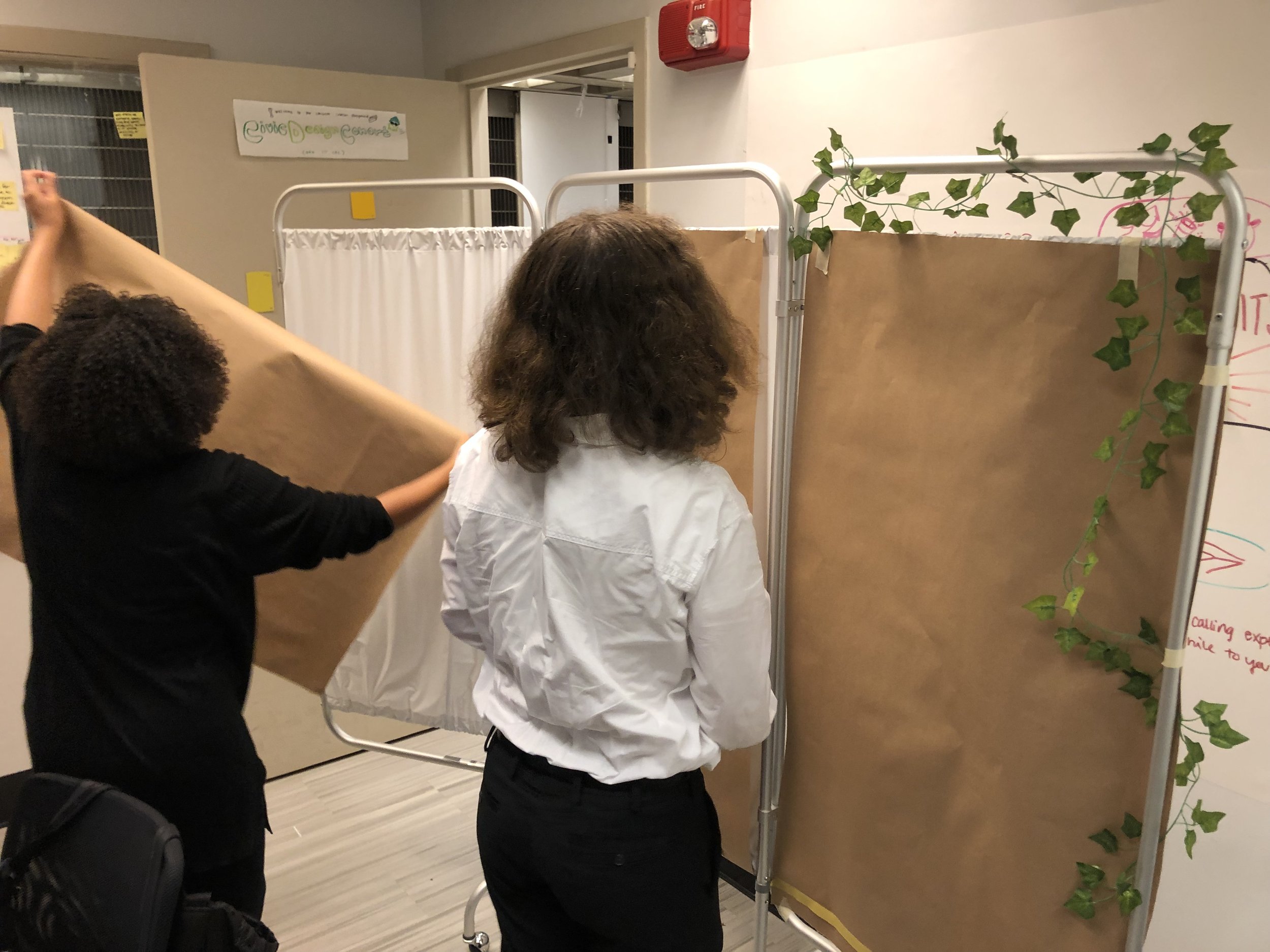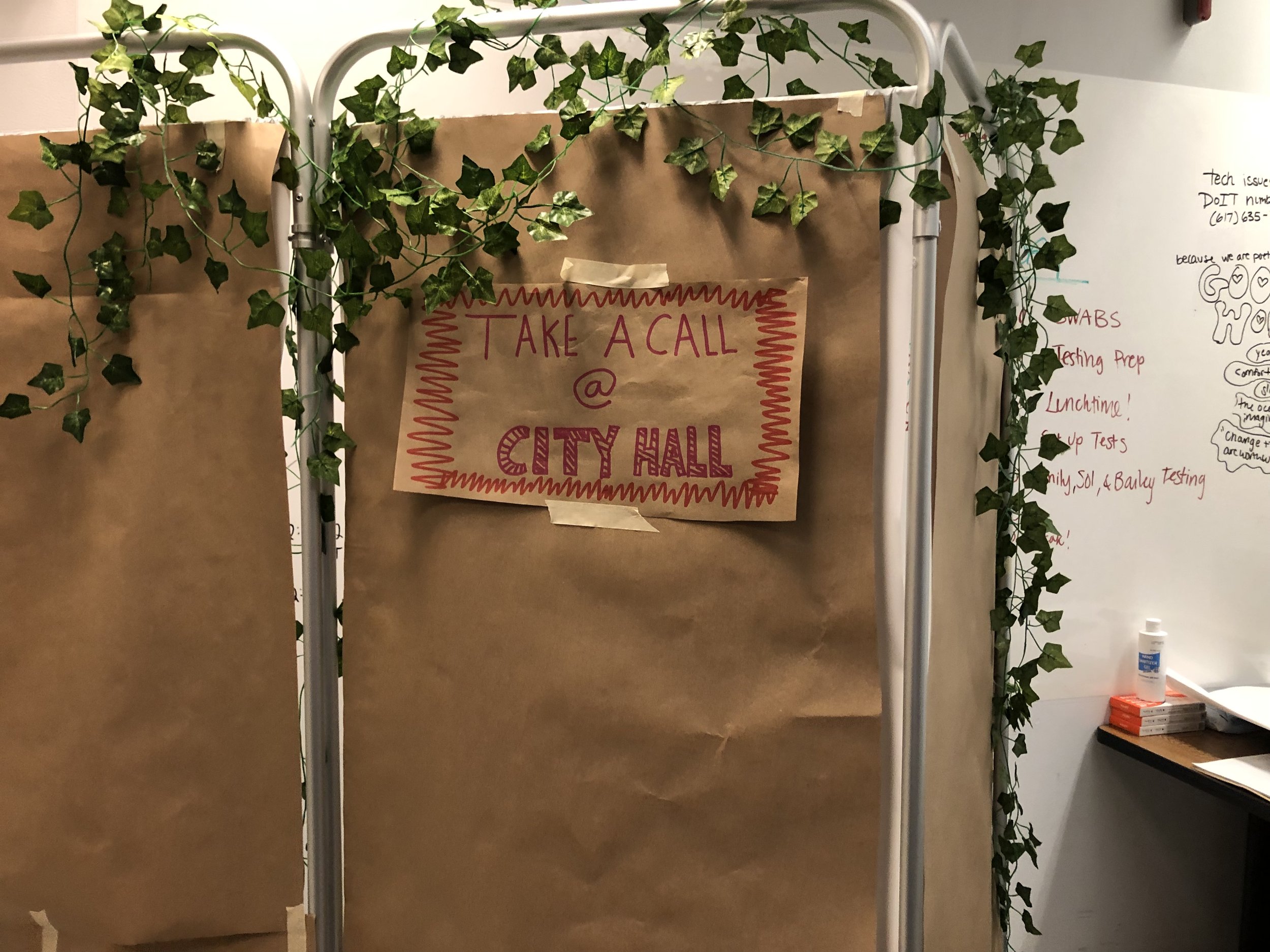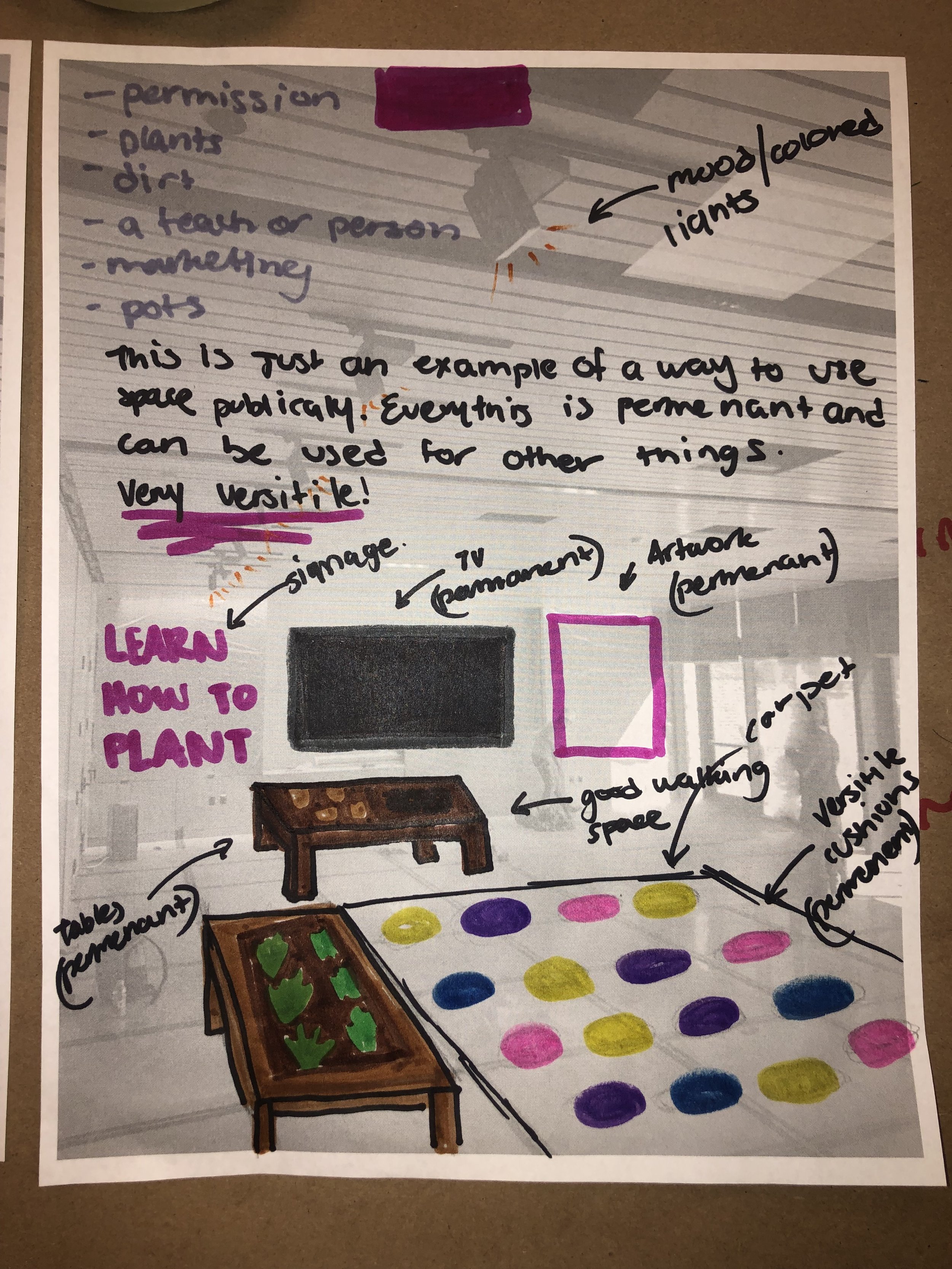Civic Design Cohort
ROLE Project Lead / Civic Design Fellow
TEAM Sabrina Dorsainvil, Sara Lopez, Ellis Seul, Melissa DePina
TAKEAWAY Young people can relate and contribute passionately to the work of their local government with the support of pay, play, and peers.
Civic Design Cohort
A program created by the New Urban Mechanics at Boston City Hall to explore youth engagement in civic design.
context
The Civic Design Cohort employs 2-3 students from Boston high schools to explore design at Boston City Hall. As the inaugural Project Lead/Civic Design Fellow, the Mayor’s Office of New Urban Mechanics tasked me with leading the 2022 Civic Design Cohort.
The Boston Mayor's Office of New Urban Mechanics (MONUM) asks, "How can we help young people participate more in the work of government?" MONUM often partners with various student groups in the city as Boston's Civic R&D Lab / Incubator. I first began working with MONUM as an undergrad student in 2019. I worked on Scout Labs, and helped design a civic engagement tool for middle-schoolers called the Student Action Portal. Later in 2021, I went on as Scout Labs Project Lead to successfully grow the partnership between MONUM and my university amid the start of the COVID-19 pandemic. Our partnership and youth civic-engagement research helped directly influence MONUM’s decision to develop a full-time youth summer fellowship called the Civic Design Cohort in 2020.
"How can we help young people participate more in the work of government?"
Three youth civic design fellows brainstorm design problem areas.
my role
Plan the cohort’s day-to-day agenda to explore civic design in Boston City Hall
Lead and generate 80+ in-person design workshops for the cohort
Mentor young designers towards success with weekly 1:1s to guide them in individual professional goals
Organize weekly 1:1 meetings with the Director of Civic Design to share feedback and progress
Facilitate in-person field observation, prototype testing, workshops, and interviews to support MONUM’s ongoing civic research efforts
objectives
Design more welcoming spaces in Boston City Hall, Pavilion, and Plaza as a cohort
Mentor the high-school cohort in exploring civic design as their project lead
Research youth civic engagement by creating a new role with the Director of Civic Design, Sabrina Dorsainville, and documenting our learnings
challenges
Fatigue - Adjusting to full time, in person, work during an on-going pandemic made it hard to maintain daily stamina and complete tasks.
Novelty - Being young meant we lacked the network and experience to easily move around the century-old government institution. We also utilize this characteristic to our advantage.
Workload - The workload quickly became large enough to require a second person yet we lacked the staffing and budget.
Burnout - I experienced significant burnout from constantly generating and implementing new ideas as the first person in this position.
process
Returning to a fully in-person program changed the way we worked. Just take a look inside our HQ, overflowing with brainstorm sticky-notes, handwritten ideations, and bright colors that directly influenced our final products.
From field research and photo explorations, to prototypes and service blueprints, we did it all! Below you can scroll through just a few highlights from our dense day-to-day.
Two Civic Design Fellows affinity map during a zine brainstorm.
“Our cohort’s collaborative spirit and collective brainstorming greatly enhanced my MONUM experience and contributed to my understanding of what civic design truly is.”
- Ellis Seul, Youth Civic Design Fellow
outcomes
PHYSICAL INTERVENTION PROTOTYPES
As a cohort, we designed lo-fi prototypes that visualize and suggest how to make Boston City Hall, the Plaza, and the Pavilion more welcoming to guests and staff. See some of this process below.
WRITTEN REFLECTIONS
To solidify their learnings, each young designer reflected on their Civic Design Cohort experience in the form of blogposts. As their mentor, I led the three young designers with daily reflections, goal-tracking, and weekly 1:1s to help build these blogposts. Please read these at the links below.
I also wrote a final reflection to explore the future of civic design. Please read this at the link below.
Our cohort painted and re-purposed four newspaper boxes to share our printed zine around Boston City Hall.
COLLABORATIVE ZINE
What is Civic Design? Throughout the program, I mentored the three young designers around this question, and successfully supported them in publishing their findings in the form of a collaborative zine. (Ask me why we chose a zine format!)
To illustrate the answer to this question, the cohort told the story of a frog named Tomo. Tomo is a young designer navigating civic design at Boston City Hall just like us. The final story combined illustration, collage, and handwriting to emphasize our cohort’s hands-on approach to civic design.
The zine cover shows Tomo the frog, Boston City Hall, and the MBTA Orange Line.


